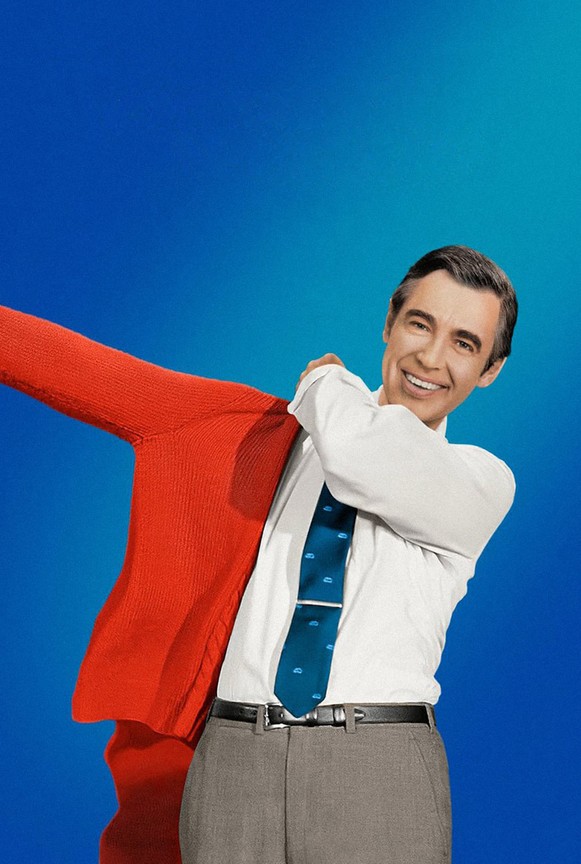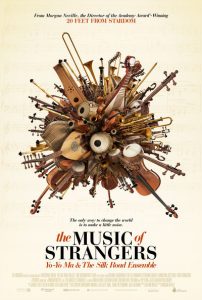Won’t You Be My Neighbor?
Posted on June 7, 2018 at 5:23 pm
B +| Lowest Recommended Age: | Middle School |
| MPAA Rating: | Not rated, some thematic elements and language |
| Profanity: | None |
| Alcohol/ Drugs: | None |
| Violence/ Scariness: | Discussion of difficult topics including assassinations, terrorism, prejudice, disability, loss |
| Diversity Issues: | A theme of the movie |
| Date Released to Theaters: | June 8, 2018 |

“Won’t You Be My Neighbor?” is about Mr. Rogers, a kind, gentle star of PBS children’s programming who liked us us just the way we were and was the neighbor we would all love to have next door.
His story is told in a documentary that matches its subject. It is candid but respectful, utterly heartwarming, and a particularly timely reminder that we don’t have to be swept away in bombast and sensory overload. It is also a welcome reminder that children need us to help them understand themselves and the world around them, even when some aspects are painful and difficult. Indeed, Fred Rogers exemplified the idea that adults were here to protect children not by keeping information about tragedy and hardship away from them but by helping them learn how to respond. His advice to “look for the helpers” is always repeated when some terrible new story is in the news. And of course he was one of the greatest helpers of all. “One of my main jobs,” he said, “is through the mass media to help children through the difficult modulators of life.” These included world events and also family issues like divorce and emotions like anger. One of the film’s most remarkable archival scenes is Fred Rogers testifying before a skeptical Senator about the importance of funding PBS. Instead of reeling off statistics, Rogers recited the lyrics to a song about how to deal with angry feelings. When he was done, the senator, obviously not just moved but pretty much tamed, says quietly, “You just got $20 million.”
Fred Rogers was an aspiring Presbyterian minister when he realized that television had enormous influence on children and that most of children’s programming was loud, rude, and violent. He put his plans on hold to start a series for the new Public Broadcasting Service that would be quiet, low-key, and low-tech. As a producer of the show noted the theory of the series was, “You take all of the elements that make good television and don’t do any of them.” He says, “I never felt I had to wear a funny hat.” And he welcomes elements that are anathema to television, including silence. Mr. Rogers set a timer to show children how long a minute was and just sat there while it moved around the circle. There a lot of “slow space, but no wasted space.” He was patient. He listened.
The show’s first national broadcast was in 1968, a time when there were many difficult modulators to navigate. “What does assassination mean?” a frightened Daniel Tiger puppet asks? He gets an answer that is honest but presented in a way that helps him not just understand it but understand how to process it.
In each episode, Mr. Rogers would come into the house, change his shoes, put on his sweater (one is now in the collection of the Smithsonian Museum of American History), and have a little chat or sing a song to the audience. He would talk to the mailman or another friend from the neighborhood, and maybe interview a guest or explain something, from how biscuits get made in a bakery to how a young Yo Yo Ma plays the cello. Rogers himself never appeared before the camera in the other part of the show, set in a magical land, because he wanted a clear demarcation between the “real” and fantasy parts of the show. But he voiced the puppets, as many as ten characters, and we see more than once that those puppets allowed him to express parts of himself he could not any other way.
Director Morgan Neville (“20 Feet from Stardom”) had nearly 1000 hours of archival footage to choose from and, while he certainly could have made several movies based on Fred Rogers’ life, the clips and contemporary interviews are exceptionally well chosen and well matched. We learn that Rogers asked Francois Clemons, a black man, to play the policeman on the show in part to promote diversity. A scene from the show where the men soak their feet together to cool off on a hot day is juxtaposed with contemporary news footage of black swimmers being thrown out of a public pool. Clemons says he was reluctant to play a policeman because the experience of his own neighborhood with police was not good. But he took the job. And then we learn that Clemons is gay, and hear how Rogers’ response to that news changed over time.
Two of the movie’s most powerful archival scenes are the interview Rogers said was his most memorable, with Jeff Erlanger a cheerful 10-year-old quadriplegic, and his time with Koko, who apparently indicated that he was her favorite visitor. Rogers’ palpable delight and boundless empathy have them end up in an embrace that is utterly endearing.
We hear from his family, friends, and colleagues, and from Ma (whose son is one of the film’s producers). But most of all, we hear from Rogers himself, who tells us, “I don’t think anyone can grow unless he is accepted exactly as he is.” Other than Fox News, who we briefly hear blaming Rogers for the entitlement of the millennial generation, we all feel lucky that Mr. Rogers was exactly who he was, and this lovely film reminds us that we cal all be more like him.
Parents should know that this movie includes discussion of difficult issues and some archival footage of tragic news stories and a brief humorous shot of a bare bottom.
Family discussion: What parts of Mr. Rogers did we only see through the puppets? What are your favorite television shows for children?
If you like this, try: “20 Feet from Stardom” and “Street Gang” (about “Sesame Street”)




